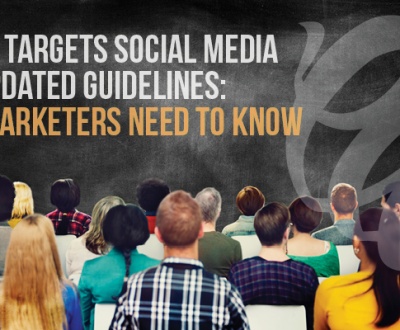Five Things Great Brands Will Do Differently On Social Media In 2016
- January 5, 2016
- Brand development, Social Media
By: Jerry Daykin
Social channels have become walled gardens, offering meaningful mobile reach and relative safety from fraud and adblockers. Ironically there’s never been a better time to invest in them, not because of some new promise of engagement and conversation, but because they’re starting to deliver on traditional media and marketing objectives. There are however still plenty of ways to completely waste your time and money on social media marketing, and no reason at all why every brand should “have” to use it.
Last year was great for social but it’s always good to have some perspective. Facebook’s recent $4.5bn (£3.1bn) earnings are hugely impressive but also suggest that overall social investment is still only around 1% of total media spends ($611bn globally). If there’s any doubt of the continual appeal of traditional media then look no further than the US Super Bowl – any advertiser could have shifted their budget from a single 30 second commercial and instead driven around 80m views on YouTube, enough to make them the most viewed video of the year. Clearly many advertisers were happy to keep their budgets on TV.
In short, there’s a long way to go before social channels truly dominate media plans as much as they monopolise marketing headlines. Here, however, are five things great brands will do differently in 2016 (on top of the ones they started doing in 2015).
1. Put their money where their mouth is
However great your content is, if it doesn’t reach people it can’t possibly impact them. Brands must either accept that these channels are a serious part of your media mix (building incremental reach over other media) and put mainstream investment behind them, or quit wasting their time. An alarmingly high number are trapped in this halfway house of investing in producing content but not being committed enough to truly put scale behind it. Plan investment based on how many potential consumers you’d realistically need to reach to drive business results, not how many fans you have. And don’t produce any content you won’t have the media budget to support.
2. More video, less often
It costs a lot to reach large numbers of people more than a couple of times a month, and like in traditional media you can also show the same piece of creative more than once before it “wears out”. Producing just one or two great posts a month removes the need to churn out thoughts of the day and reactive nonsense, and allows you to focus resources on producing something genuinely memorable. Video offers a huge opportunity to tell richer stories or even just to better stand out with gentle animation. With more time to shape it (and new sources such as super-users, crowdsourcing and media partnerships) there’s no reason why brands cannot make all their content video in 2016.
3. Think about real people
Although these channels offer mass broadcast opportunities, they’re also hugely personal spaces where a generic message can feel out of place. Thinking about real people and not just pixels or numbers doesn’t mean you cannot have huge scale, but it means you can explore personalisation and targeting within that – subtly different executions served to different people based on interests, posts or even sentiments. Managing how people see your content across related platforms such as Facebook and Instagram, or perhaps one day Google and Twitter through their integrations, starts to give you real control of your marketing – allowing you to stop wasting money by reaching someone in too many places (frequency capping) or even to tell a continual story across channels. The social platforms themselves have even started using real people to curate content instead of just algorithms such as Twitter’s Moments and Snapchat’s Live Stories.
4. Send a message
Four of the world’s six largest social platforms are messaging apps, and their growth is only accelerating, but few marketers are yet to make use of them. In western markets it’s hard to blame them, as few scalable opportunities exist, but platforms such as WeChat and Line, in China and Japan respectively, give a glimpse of what’s to come when these platforms open up. Branded stickers and promoted conversations only scratch the surface of a world where commercial transactions (from airplane tickets to clothes shopping to taxi booking) can take place directly through the app. By the end of 2016 the capabilities of messaging apps, and in turn the transformational opportunities they present to marketers, will be unrecognisable. Global brands don’t have to sit back and wait either, the clever ones are already experimenting on Asian platforms.
5. Innovate through brilliant basics
There are plenty of shiny temptations in social media marketing, from immersive ad units, through 360-degree videos, to the latest and greatest betas. Some of these will one day turn into powerful platforms but their early adoption can often be innovation for innovation’s sake – have you ever tried telling a story in 360, where people can accidentally look the wrong way the entire time?
The most impactful innovations of the past couple of years come from looking again at the basic tools these platforms offer. Cinemagraphs are a basic video technique that has existed for many years, but when you realise that Facebook’s autoplaying video feed can show a few seconds of one to a person for the same price as a static image they’re a no brainer. Brands and their agencies are always keen to be part of the next big thing, but chances are that might be right in front of you. The biggest innovations social media still needs are improvement in the quality of content, and sophistication of media planning. Brilliant basics.
About us and this blog
We are a digital marketing company with a focus on helping our customers achieve great results across several key areas.
Request a free quote
We offer professional SEO services that help websites increase their organic search score drastically in order to compete for the highest rankings even when it comes to highly competitive keywords.
Subscribe to our newsletter!
Recent Posts
- Top 25 Local Search Ranking Signals You Need to Know December 26, 2018
- Case Study: LeeHomeLoans.com August 19, 2017
- Case Study: H2O Offshore Adventures March 16, 2017





